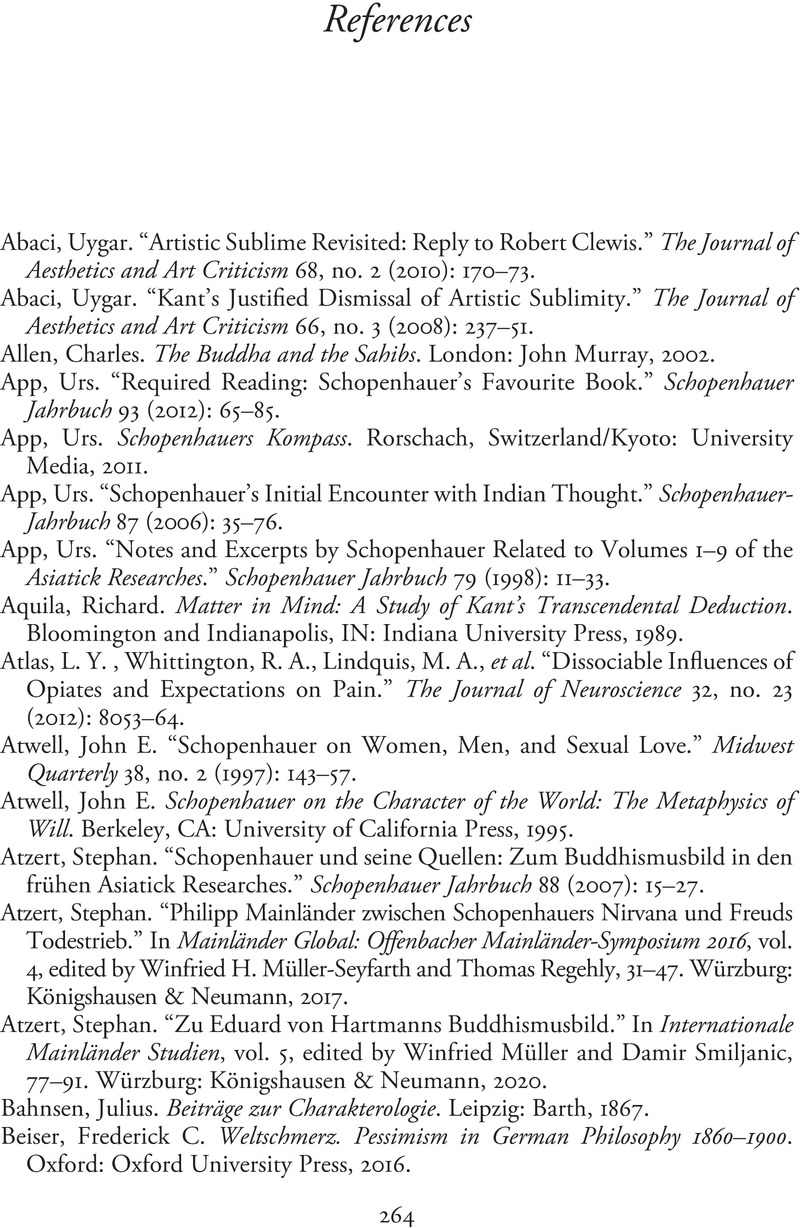Book contents
- Schopenhauer’s The World as Will and Representation
- Cambridge Critical Guides
- Schopenhauer’s The World as Will and Representation
- Copyright page
- Contents
- Contributors
- Acknowledgments
- Note on Texts, Translations, and Abbreviations
- Introduction: Schopenhauer in the Time of Pandemic
- Chapter 1 Different Kinds of Willing in Schopenhauer
- Chapter 2 Resignation
- Chapter 3 Appreciating Nature Aesthetically in The World as Will and Representation: Between Kant and Hegel
- Chapter 4 The Hour of Consecration: Inspiration and Cognition in Schopenhauer’s Genius
- Chapter 5 Experiencing Character as a Key for a Present-Day Interpretation of Schopenhauer
- Chapter 6 Schopenhauer in Dialogue with Fichte and Schelling: Schopenhauer’s Critique of Moral Fatalism and His Turn to Freedom from Willing
- Chapter 7 Schopenhauer’s Philosophy of Religion: (Hopeless) Romanticism?
- Chapter 8 Maja and Nieban in The World as Will and Representation
- Chapter 9 Schopenhauer, Universal Guilt, and Asceticism as the Expression of Universal Compassion
- Chapter 10 Seeing Things: Schopenhauer’s Kant Critique and Direct Realism
- Chapter 11 The Sciences in The World as Will and Representation
- Chapter 12 Pushing Back: Reading The World as Will and Representation as a Woman
- References
- Index
- Cambridge Critical Guides
- References
References
Published online by Cambridge University Press: 08 December 2022
- Schopenhauer’s The World as Will and Representation
- Cambridge Critical Guides
- Schopenhauer’s The World as Will and Representation
- Copyright page
- Contents
- Contributors
- Acknowledgments
- Note on Texts, Translations, and Abbreviations
- Introduction: Schopenhauer in the Time of Pandemic
- Chapter 1 Different Kinds of Willing in Schopenhauer
- Chapter 2 Resignation
- Chapter 3 Appreciating Nature Aesthetically in The World as Will and Representation: Between Kant and Hegel
- Chapter 4 The Hour of Consecration: Inspiration and Cognition in Schopenhauer’s Genius
- Chapter 5 Experiencing Character as a Key for a Present-Day Interpretation of Schopenhauer
- Chapter 6 Schopenhauer in Dialogue with Fichte and Schelling: Schopenhauer’s Critique of Moral Fatalism and His Turn to Freedom from Willing
- Chapter 7 Schopenhauer’s Philosophy of Religion: (Hopeless) Romanticism?
- Chapter 8 Maja and Nieban in The World as Will and Representation
- Chapter 9 Schopenhauer, Universal Guilt, and Asceticism as the Expression of Universal Compassion
- Chapter 10 Seeing Things: Schopenhauer’s Kant Critique and Direct Realism
- Chapter 11 The Sciences in The World as Will and Representation
- Chapter 12 Pushing Back: Reading The World as Will and Representation as a Woman
- References
- Index
- Cambridge Critical Guides
- References
Summary

- Type
- Chapter
- Information
- Schopenhauer's 'The World as Will and Representation'A Critical Guide, pp. 264 - 276Publisher: Cambridge University PressPrint publication year: 2022

